Download Qualcomm GLOBALSTAR GIK-1700 User guide
Transcript
80-C6303-1.book Page 1 Tuesday, June 13, 2006 1:13 PM QUALCOMM Globalstar GIK-1700 Globalstar Installation Kit User Guide 80-C6303-1.book Page 2 Tuesday, June 13, 2006 1:13 PM This guide is based on the production version of the QUALCOMM Globalstar GIK-1700 Globalstar Installation Kit. Software changes may have occurred after this printing. QUALCOMM reserves the right to make changes in technical and product specifications without prior notice. QUALCOMM Incorporated 5775 Morehouse Drive, San Diego, CA 92121-1714 Document Number 80-C6303-1 Rev B Copyright © 2006 QUALCOMM® Incorporated All rights reserved This technology was exported from the United States Government. Diversion contrary to U.S. law prohibited. ® QUALCOMM is a registered trademark of QUALCOMM Incorporated. ® Digital by QUALCOMM is a registered trademark of QUALCOMM Incorporated. SMART KEY™ is a trademark of QUALCOMM Incorporated. Globalstar™ is a trademark of Globalstar, Inc. All other trademarks and registered trademarks are the property of their respective owners. Printed in the United States of America 80-C6303-1.book Page i Tuesday, June 13, 2006 1:13 PM Table of Contents Introduction .................................................................................1 Features .................................................................................... 1 Safety precautions ................................................................... 1 Exposure to radio frequency signals ....................................... 2 Antenna care ............................................................................3 Phone operation ....................................................................... 3 Driving ...................................................................................... 4 Electronic devices ..................................................................... 4 Pacemakers ....................................................................................5 Hearing aids ...................................................................................5 Other medical devices ....................................................................5 Vehicles ..........................................................................................6 Posted facilities ..............................................................................6 Aircraft ..................................................................................... 6 Blasting areas .......................................................................... 6 Potentially explosive atmospheres .......................................... 7 For vehicles equipped with an air bag .................................... 7 Battery care .............................................................................. 7 Other safety issues ................................................................... 8 Components ..................................................................................9 Globalstar Installation Kit standard components ...............10 Component parts ....................................................................11 Globalstar Installation Kit ..........................................................11 Speaker .........................................................................................11 Hands-Free microphone ..............................................................11 Power interface cable ...................................................................11 i 80-C6303-1.book Page ii Tuesday, June 13, 2006 1:13 PM Car stereo muting (STEREO MUTE) .........................................12 Ignition sense ...............................................................................12 Car Power Adapter ......................................................................13 Exterior antenna ..........................................................................13 Globalstar Installation Kit optional accessories .................. 14 Optional accessories (not included in kit) .............................15 Privacy headset ............................................................................15 Data cable .....................................................................................15 Operation ....................................................................................17 Using the phone in a vehicle .................................................17 Attaching the phone to the Globalstar Installation Kit ............17 Turning on the phone and GIK ...................................................18 Charging the phone battery ........................................................19 Car stereo mute ...........................................................................20 Hands-free mode ....................................................................20 When you use hands-free mode ..................................................21 Adjusting speaker volume ..................................................... 21 Connecting to a personal computer ....................................... 22 Privacy Headset ..................................................................... 22 Privacy headset operation ...........................................................22 Troubleshooting ........................................................................25 ii 80-C6303-1.book Page 1 Tuesday, June 13, 2006 1:13 PM Introduction Before using your Globalstar Installation Kit in a vehicle, please read this manual thoroughly and retain it for future reference. Professional installation is recommended. Features The Globalstar Installation Kit (GIK) allows your Globalstar satellite phone to be used as a mobile phone in your vehicle. With this kit installed in a vehicle, you can: ■ Turn the phone on and off by turning the vehicle’s ignition on and off. ■ Talk without picking up the phone. ■ Obtain unlimited talk time using DC current supplied by your vehicle. ■ Charge the phone’s battery. Safety precautions When using your phone in a vehicle, please observe the following rules. Caution Failure to follow these instructions may lead to serious personal injury and possible property damage. 1 80-C6303-1.book Page 2 Tuesday, June 13, 2006 1:13 PM Introduction Secure the phone in your vehicle to prevent personal injury and damage to the phone in the event of an accident. ■ When attaching or detaching the exterior antenna to the GIK with the antenna cables, disconnect all power to the phone and the GIK. Note that DC voltage is present in the central conductor of the antenna cable (45-C6162-1). See Globalstar Installation Kit standard components, page 10. Detach the phone from the GIK and disconnect the power interface cable (45-C6184-1) to the GIK when jump starting the vehicle or recharging the car battery. Jump starting may cause the GIK fuse to open. Refer to the installation sheet for further information regarding interconnects. ■ Exposure to radio frequency signals Your wireless handheld portable telephone is a low power radio transmitter and receiver. When it is on, it receives and also sends out radio frequency (RF) signals. In August, 1996, the Federal Communications Commissions (FCC) adopted RF exposure guidelines with safety levels for hand-held wireless phones. Those guidelines are consistent with the safety standards previously set by both U.S. and international standards bodies: ■ ANSI/IEEE C95.1-1999 Standard1 ■ NCRP Report 86 (1986)2 ■ ICNIRP (1998)3 1. American National Standards Institute 2. National Council on Radiation Protection and Measurements 2 01introEN.fm Page 3 Tuesday, June 13, 2006 2:18 PM Introduction ■ IRPA (1991) Guidelines on Protection Against Non-ionizing Radiation1 The phone and this kit are designed to comply with established ANSI, FCC, and international safety standards for safe levels of human exposure to RF energy. Nonetheless, RF field intensity at the surface of the transmitting antenna is fairly high. Maintaining a minimum line-of -sight separation distance of 25 cm (10 inches) between the transmitting antenna and all personnel will ensure that the General Population/Uncontrolled Exposure Maximum Permissible Exposure (MPE) limits are not exceeded. This satisfies the MPE limits mandated by the FCC in 47 CFR Ch. 1 (2006 Edition), Part 1, paragraph 1.1310 and defined in the ANSI/IEEE C95.1-1999 standard, and also satisfies the slightly more-stringent European and international exposure limit recommendations of IRPA (1991) and ICNIRP (1998). Antenna care Use only the supplied or an approved replacement antenna. Unauthorized antennas, modifications, or attachments could damage the phone and may violate FCC regulations. Phone operation Hold the phone as you would any other telephone with the antenna pointed up and over your shoulder. 3. International Commission on Non-Ionizing Radiation Protection 1. Internal Radiation Protection Association 3 80-C6303-1.book Page 4 Tuesday, June 13, 2006 1:13 PM Introduction Tip For your phone to operate most efficiently: ❑ Extend your antenna fully. ❑ Do not touch the antenna unnecessarily when the phone is in use. Contact with the antenna affects call quality and may cause the phone to operate at a higher power level than otherwise needed. Driving In the areas where you drive, always obey the local laws and regulations on the use of wireless telephones. If using your phone while driving, please: ■ Give full attention to driving – driving safely is your first responsibility. ■ Use hands-free operation, if available. ■ Pull off the road and park before making or answering a call if driving conditions require you to do so. Electronic devices Most modern electronic equipment is shielded from RF signals. However, certain electronic equipment may not be shielded against the RF signals from your wireless phone. 4 80-C6303-1.book Page 5 Tuesday, June 13, 2006 1:13 PM Introduction Pacemakers The Health Industry Manufacturers Association recommends that a minimum separation of six inches (15 cm) be maintained between a handheld wireless phone and a pacemaker to avoid potential interference with the pacemaker. These recommendations are consistent with the independent research by and recommendations of Wireless Technology Research. Persons with pacemakers: ■ Should ALWAYS keep the phone more than six inches from their pacemaker when the phone is turned on. ■ Should not carry the phone in a breast pocket. ■ Should use the ear opposite the pacemaker to minimize the potential for interference. ■ If you have any reason to suspect that interference is taking place, turn your phone off immediately. Hearing aids Some digital wireless phones may interfere with some hearing aids. In the event of such interference, you may want to consult your service provider (or call the customer service line to discuss alternatives). Optional for each phone manufacturer. Other medical devices If you use any other personal medical device, consult the manufacturer of your device to determine if it is adequately shielded from external RF energy. Your physician may be able to assist you in obtaining this information. 5 80-C6303-1.book Page 6 Tuesday, June 13, 2006 1:13 PM Introduction Turn your phone off in health care facilities when any regulations posted in these areas instruct you to do so. Hospitals or health care facilities may be using equipment that could be sensitive to external RF energy. Vehicles RF signals may affect improperly installed or inadequately shielded electronic systems in motor vehicles. Check with the manufacturer or its representative regarding your vehicle. You should also consult the manufacturer of any equipment that has been added to your vehicle. Posted facilities Turn your phone off in any facility where posted notices require you to do so. Aircraft FCC regulations prohibit using your phone while in the air. Switch off your phone before boarding an aircraft. Blasting areas To avoid interfering with blasting operations, turn your phone off when in a “blasting area” or in areas posted: “Turn off two-way radio”. Obey all signs and instructions. 6 80-C6303-1.book Page 7 Tuesday, June 13, 2006 1:13 PM Introduction Potentially explosive atmospheres Turn your phone off when in any area with a potentially explosive atmosphere and obey all signs and instructions. Sparks in such areas could cause an explosion or fire resulting in bodily injury or even death. Areas with a potentially explosive atmosphere are often but not always clearly marked. They include fueling areas such as gasoline stations; below deck on boats; fuel or chemical transfer or storage facilities; vehicles using liquefied petroleum gas (such as propane or butane); areas where the air contains chemicals or particles, such as grain, dust, or metal powders; and any other area where you would normally be advised to turn off your vehicle engine. For vehicles equipped with an air bag An air bag inflates with great force. DO NOT place objects, including both installed or portable wireless equipment, in the area over the air bag or in the air bag deployment area. If in-vehicle wireless equipment is improperly installed and the air bag inflates, serious injury could result. Battery care The phone’s battery stores a large amount of energy when fully charged. If the battery is punctured, crushed, severely overheated, or charged in a non-QUALCOMM charger, this energy can be released suddenly and result in potential injury. ■ Do not overheat the battery by leaving it on a heater or in the sun. 7 80-C6303-1.book Page 8 Tuesday, June 13, 2006 1:13 PM Introduction ■ Do not dispose of the battery in a trash compactor or incinerator. ■ Use only charging accessories manufactured by QUALCOMM, and discontinue use of the battery if it becomes damaged. Other safety issues In order to avoid the potential for confusing the phone as a weapon, the phone features a distinctive flame orange dot on the top of the antenna. ■ This orange dot is a convention used by manufacturers of various devices and is familiar to safety officers in the country of manufacture and other countries. ■ Do not remove or cover the dot, and avoid using or handling the phone in a threatening manner or so as to suggest that the phone is a weapon. 8 80-C6303-1.book Page 9 Tuesday, June 13, 2006 1:13 PM Components Check the components of the Globalstar Installation Kit listed below. If there is something missing, please contact the service provider where you purchased your kit. Component parts CV90-C6029-1 Globalstar Installation Kit CV90-C6030-1 Speaker Installation Kit 80-C6061-1 Hands-Free Microphone 45-C6184-1 Power-Interface Cable 65-C6185-1 Hardware Kit 45-H3210-6 Speaker Extension Cable 50-C6045-1 Speaker Mounting Bracket CV90-C6032-1 Car Power Adapter 45-C6162-1 Antenna Cable 65-C6056-1 Literature Kit GIK-1750 Patch Antenna GIK-1770 Quadri-filar Helix Antenna 9 80-C6303-1.book Page 10 Tuesday, June 13, 2006 1:13 PM Components Globalstar Installation Kit standard components Accessory position ACC OFF START LOCK S SEN L DSP 1 OFF PACT COM ND SOU ALAUD DIGIT F RCE SOU ET A REP 1 SHU 2 3 S D-BAS IO E MOD 6 5 4 3 2 OFF ASE RELE 45-C6184-1 80-C6061-1 Battery 45-H3210-6 45-C6162-1 Antenna 10 80-C6303-1.book Page 11 Tuesday, June 13, 2006 1:13 PM Components Component parts Globalstar Installation Kit The Globalstar Installation Kit (CV90-C6029-1) securely holds the Globalstar phone, interfaces to the vehicle’s power, and houses the electronic circuit for the GIK. It provides and controls the supply voltages for the accessories and the charge current for the phone. Speaker The speaker (CV90-C6030-1) connects to the GIK speaker jack. It should be mounted at least 20 inches (50 cm) away from the HandsFree microphone and should not be pointed towards the microphone. It can be mounted either on the cradle or remotely, depending on the user’s preference. Hands-Free microphone The Hands-Free microphone (80-C6061-1), a unidirectional mousestyle microphone, connects to the GIK microphone jack. It can be installed with velcro or tape on the A-pillar or on the driver’s sun visor. Power interface cable There are two options to connect to the car’s power supply; the car interface cable and the Car Power Adapter. The power-interface cable (45-C6184-1) connects to the GIK via the 4-pin connector. 11 80-C6303-1.book Page 12 Tuesday, June 13, 2006 1:13 PM Components ■ The fused red lead connects to the positive terminal of the vehicle’s battery. ■ The black lead ground (GND) connects to a clean, unpainted metallic part of the vehicle. ■ The fused green lead (STEREO MUTE) is for car stereo mute. ■ The fused yellow lead (IGNS) is for ignition sense. Car stereo muting (STEREO MUTE) The phone provides a feature to mute the car stereo automatically during a conversation, which is convenient and provides for safer hands-free operation. When the phone rings, the green fused lead provided for the stereo mute feature goes to ground. Note This feature requires a car stereo that supports it. Ignition sense The ignition sense feature prevents the car kit from draining the vehicle’s battery by executing an auto power off 30 seconds after the ignition key has been turned off, if not currently in a call. The yellow wire of the power-interface cable (45-C6184-1) is used for the ignition sense feature. The use of ignition sense is recommended to prevent accidental draining of the vehicle’s battery. The wire is connected via a fuse to the vehicle’s ignition. 12 80-C6303-1.book Page 13 Tuesday, June 13, 2006 1:13 PM Components Car Power Adapter The GIK can alternatively be powered using the Car Power Adapter (CPA) (CV90-C6032-1). ■ Connect the CPA cable to the 4-pin connector on the back of the unit. ■ Plug the CPA into the vehicle’s car power port. Caution Refer to vehicle’s user manual regarding car power port operation. Some car power ports provide continuous power regardless of vehicle ignition state. This may require the user to remove the CPA from car power port to avoid vehicle battery drain when vehicle is off. When using the CPA, the stereo mute function is not available. Exterior antenna The exterior antenna permits communication with the satellite when the phone is installed in the GIK. Antenna cables The antenna cable consists of a pair of paired coaxial cables (45-C6162-1) that connect the exterior antenna to the GIK. Use only the antenna cables that come with your kit when connecting the exterior antenna. Do not cut or modify the antenna cables. 13 80-C6303-1.book Page 14 Tuesday, June 13, 2006 1:13 PM Components Caution DC voltage exists in the central conductor of the antenna cable. Be sure that the cable connector is installed inside the vehicle. Globalstar Installation Kit optional accessories USB Cable Privacy Headset Optional accessories GHS-1700 Privacy Headset GDC-1700 USB Data Cable 14 80-C6303-1.book Page 15 Tuesday, June 13, 2006 1:13 PM Components Optional accessories (not included in kit) Privacy headset The privacy headset (GHS-1700) offers more privacy during a call and is connected directly to the phone. Data cable A USB data cable (GDC-1700) can connect a computer or other device to the GIK, allowing the phone to send and receive data. 15 80-C6303-1.book Page 16 Tuesday, June 13, 2006 1:13 PM Components 16 80-C6303-1.book Page 17 Tuesday, June 13, 2006 1:13 PM Operation Using the phone in a vehicle Attaching the phone to the Globalstar Installation Kit 1. Remove GIK connector cover label from back of phone. Remove This Sticker 2. Remove rubber plug from connector at bottom of phone. Rotate rubber plug toward antenna. 3. Insert the connector on the bottom of the GIK into the connector on the phone. 4. Push the phone down and back until it locks into place. You should hear a click. 5. To remove the phone, press the release button at the top of the GIK, and gently remove the phone. 6. Replace the rubber plug in the connector. 17 80-C6303-1.book Page 18 Tuesday, June 13, 2006 1:13 PM Operation 1. Insert plug into phone socket 2. Rotate phone into locked position. 2. 1. Phone Socket Plug Caution Do not pull the phone out of the GIK without first pressing the release button. If you do so, you could damage the phone and the GIK. Turning on the phone and GIK When you turn on the vehicle’s ignition, the phone and the GIK are turned on. The phone is ready to make or receive a call. 18 80-C6303-1.book Page 19 Tuesday, June 13, 2006 1:13 PM Operation Accessory position ACC OFF START LOCK 358AB_1999Q Note If you turn off the vehicle’s ignition during a call, the GIK remains on so you can continue talking. (The GIK will remain on until the phone battery is fully charged. See Charging the phone battery, page 19.) Charging the phone battery When a powered on phone is placed in the GIK, whether the ignition is on or off, the GIK powers up and charges the phone’s battery. When the charge is complete, the GIK will power down. 19 80-C6303-1.book Page 20 Tuesday, June 13, 2006 1:13 PM Operation If both the phone and the GIK are powered down and the phone is placed in the GIK, the phone will charge as long as: ■ the GIK is wired to the vehicle battery, OR ■ the car power adapter cable has power (the light on the cable is lit). The phone will charge to full and then both the phone and the GIK will power down. Car stereo mute Note This feature requires a car stereo that supports it. The GIK has the ability to mute the car stereo system automatically when you make or receive a call if the car stereo has an audio mute line (STEREO MUTE). Hands-free mode The GIK allows you to use your phone more efficiently and safely while driving in your vehicle. When the phone is properly attached to the GIK and the vehicle’s ignition is on, you can speak into the microphone and listen to the other party through the speaker while keeping both hands on the steering wheel. Caution You should stop the vehicle in a safe place before attempting to dial a number. If you must talk while the 20 80-C6303-1.book Page 21 Tuesday, June 13, 2006 1:13 PM Operation vehicle is moving, use the Hands-Free microphone so that you can always concentrate on traffic conditions. If you turn off the vehicle’s ignition during a call, the call will not be interrupted. After you terminate the call, the phone will power off in 30 seconds. No subsequent calls can be made unless the ignition is turned on. The GIK will continue to charge until the phone is fully charged. When you use hands-free mode ■ It is recommended that you use one-touch dialing or speed dialing to simplify key operations. See the QUALCOMM Globalstar GSP-1700 Phone User Guide. ■ Exercise extreme caution with traffic conditions. Adjusting speaker volume You can use the volume keys on the side of the phone to adjust the speaker volume. You can: ■ Adjust the phone speaker volume while on a call. ■ Adjust the ringer volume when the phone is not on a call. Note You can also use menus to adjust the volume. Refer to the phone user guide. 21 80-C6303-1.book Page 22 Tuesday, June 13, 2006 1:13 PM Operation Connecting to a personal computer Connecting a USB data cable (GDC-1700) from your computer or other device to the data port of the GIK allows the phone to send and receive data. See Component parts, page 11. Note You cannot use the phone to talk while sending and receiving data. Privacy Headset Privacy headset operation Setting up the headset Before starting to drive: 1. Remove rubber plug from the headset jack on the left side of the phone. Rotate rubber plug toward the antenna. 2. Plug the privacy headset into the headset jack on the phone. 3. Place the headset over your ear. 4. Speak in the direction of the headset microphone instead of the Hands-Free microphone. You will hear the other party through the earplug. 5. Use the volume keys or Preferences menu on your phone to adjust the volume of the earplug when you are on a call. See the phone user guide. 22 80-C6303-1.book Page 23 Tuesday, June 13, 2006 1:13 PM Operation Using the headset To make a call with the headset: 1. Dial the desired number on the keypad of your phone. 2. Press . When you use the headset, the speaker and microphone are muted, and you can speak in privacy. To receive a call with the headset: ❑ When the phone rings, press any key except . See the phone user guide for information on the AnyKeyAnswer option. To end a call with the headset: ❑ Press . To switch from the headset to hands-free mode: ❑ Unplug the headset from the headset jack when you are not driving. 23 80-C6303-1.book Page 24 Tuesday, June 13, 2006 1:13 PM Operation 24 80-C6303-1.book Page 25 Tuesday, June 13, 2006 1:13 PM Troubleshooting If you have problems using the kit, look at these possible solutions before calling your service provider. Table 1. Error messages Message Recommendation Antenna not found Re-check phone connection to the GIK. Re-check cable connections between the GIK, antenna cable, and antenna. MCU/Communication Error Re-check phone connection to the GIK. Kit connected No troubleshooting necessary. No message when phone is placed in GIK Re-check phone connection to GIK. Verify power is supplied to GIK, either via the power-interface cable or the car power adapter. 25 80-C6303-1.book Page 26 Tuesday, June 13, 2006 1:13 PM Troubleshooting Table 2. Other problems Problem Recommendation Speaker not working Verify peaker connection to GIK. Verify volume setting on phone is loud enough to hear speaker. Microphone is not working Verify microphone connection to GIK. Verify handset is not set to “mute” during a call. After charging/ jumping vehicle battery, phone no longer works Replace GIK fuse on the red wire. Refer to the installation sheet for replacement instructions. 26 80-C6303-1.book Page 1 Tuesday, June 13, 2006 1:13 PM Index A adjusting headset earplug volume 22 adjusting ringer volume 21 adjusting speaker volume 21 air bag safety 7 anetnna cables DC voltage 14 antenna cable 9 exterior 13 patch 9 Quadri-filar helix 9 safety 3 antenna cables DC voltage 2 B battery charging 19 C cables antenna 13 power interface cable 11 car interface cable battery connection 12 ground 12 ignition sense 12 ignition sense feature 12 stereo mute 12 Car Power Adapter 9 car stereo mute 12, 20 components 11 D data cable 15 dialing one touch 21 speed 21 driving safety 4 E electronic devices 4 exterior antenna 13 F fuse 2, 26 G Globalstar Installation Kit 11 attaching the phone 17 components 9 features 1 optional accessories 14 release button 17 standard components 10 turning off 19 turning on 18 Index-1 80-C6303-1.book Page 2 Tuesday, June 13, 2006 1:13 PM Index H R hands-free mode 20 Hardware Kit 9 hearing aids 5 radio frequency 2 recharging vehicle battery safety precautions 2 I S ignition sense auto power off 12 safety air bags 7 aircraft 6 antenna 3 blasting areas 6 driving 4 electronic devices 4 explosive atmospheres 7 hearing aids 5 hospitals 6 medical devices 5 pacemakers 5 precautions 1 radio frequency 2 speaker 9, 11, 20 connecting 11 extension cable 9 mounting bracket 9 J jump starting your vehicle safety precautions 2 L Literature Kit 9 M medical devices 5 microphone 9, 11, 20 connecting 11 installation 11 O operation 17 optional accessories 15 P pacemakers 5 patch antenna 9 power interface cable 11 Power-Interface Cable 9 privacy handset 15 operation 23 privacy headset 22 adjusting earplug volume 22 Q Quadri-filar helix antenna 9 Index-2 T Troubleshooting Error messages 25 Other problems 26 U USB data cable 22


































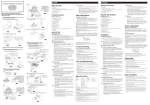
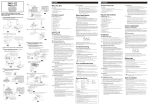


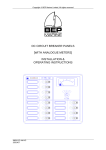
![ac circuit breaker panels [without meters] installation - thornam-shop](http://vs1.manualzilla.com/store/data/006886941_1-35cc363a8b64d2c248bc8206f0066550-150x150.png)